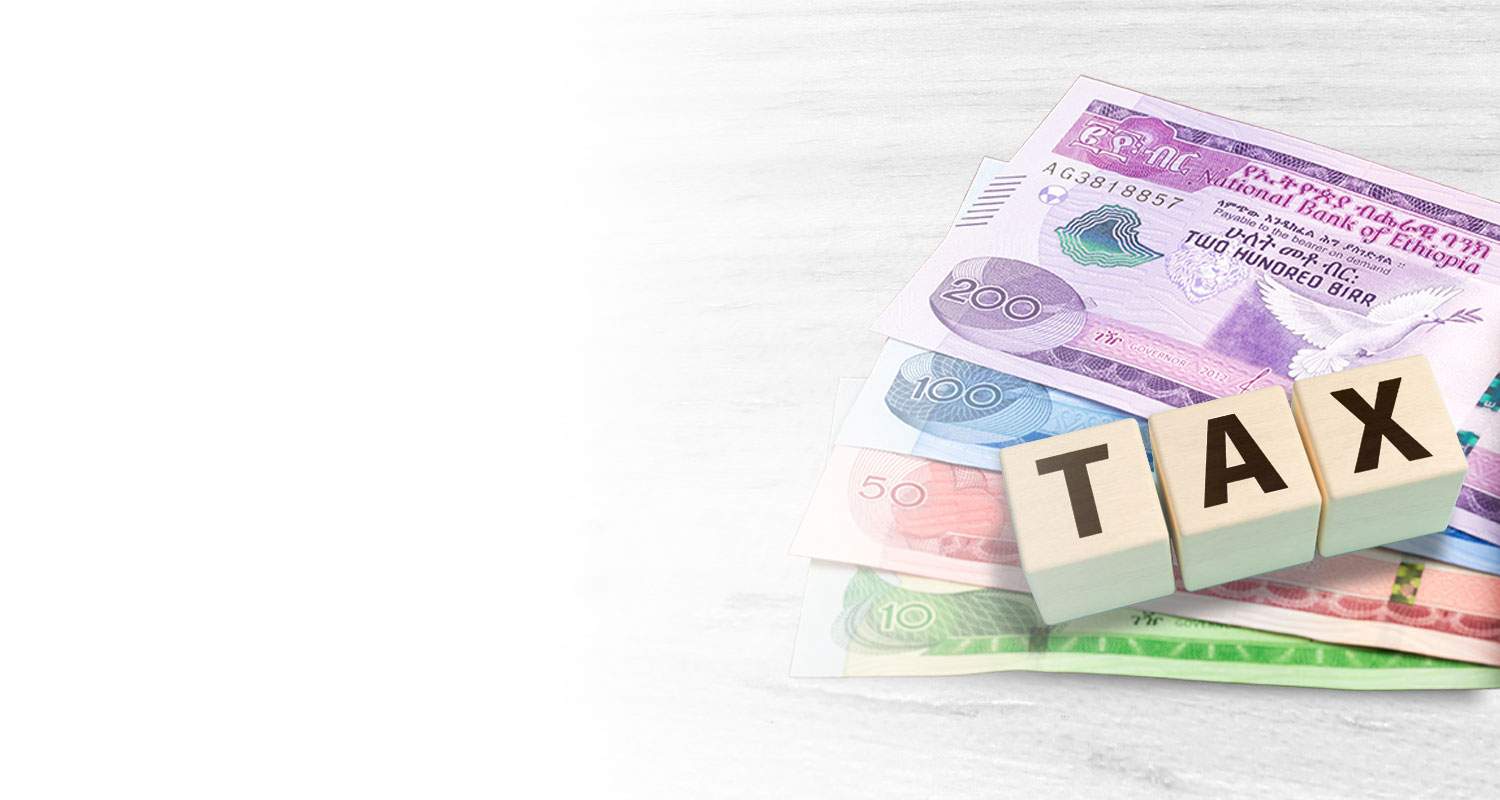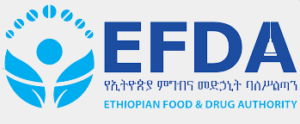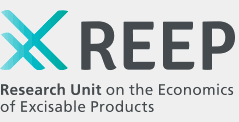
Tobacco Taxation in Ethiopia
In 2020, Ethiopia adopted new tobacco tax and price policies that are more compliant with WHO recommendations.
The new tobacco tax structure, which consists of a specific and an ad valorem component, is expected to significantly impact Ethiopia’s tobacco prices, revenues, and sales volume.
The Tobacconomics tax report
, which ranks the tobacco tax systems of 178 countries, has scored Ethiopia 1.5/5 in 2020, indicating that there is still much room for improvement.This page provides insights on the current tobacco tax regime and its impact on excise revenue, sales, and prices using a variety of datasets.
Research from the past 20 to 25 years indicates that the single most effective tobacco control measure is an increase in the excise tax on tobacco products.
An increase in the excise tax on tobacco increases the retail price of the product. The government controls the excise tax. In so doing, the government can make tobacco less affordable, thus reducing consumption, increasing government revenue, and saving lives.
Even though nicotine is highly addictive, an increase in the price of tobacco products reduces the demand for them. Governments can impose a variety of taxes on tobacco and tobacco products.Types of Taxes Applied to Tobacco Products
- Ad Valorem Tax: Ad valorem taxes are levied based on the value of the product (e.g., a percentage of the factory price or retail price).
- Specific Tax: Specific taxes are charged based on quantity. In other words, they are taxes or fees added to a product on a per-unit basis (e.g., a tax per stick of cigarette).
- Value Added Tax (VAT): It is a consumption tax levied at each stage of the supply chain where value is added, from initial production to the point of sale. The amount of VAT the user pays is based on the cost of the product minus any costs of materials in the product that have already been taxed at a previous stage. Ethiopia’s standard VAT is 15%.
- Customs tax: It is a tax imposed on imports and exports of goods.
- Surtax: It is a tax levied on top of another tax. In Ethiopia, all goods imported into the country (with a few exceptions) are subject to a 10% surtax.
In February 2020, the House of People’s Representatives of Ethiopia adopted a tobacco taxation policy change as part of the new excise tax proclamation No. 1186/2020. This new law repealed the Excise Tax Proclamation No. 307/2002 (and its amendments). Under the old law, the excise tax was levied as a pure ad valorem tax, levied at a rate of 75% on the cost of production for locally produced tobacco or 75% on the Cost, Insurance, and Freight (CIF) value for imported tobacco. The new proclamation introduced a specific rate of 8 ETB ($0.25)
per pack of cigarettes but reduced the ad valorem tax to 30% of the production cost or CIF value.The new tax law taxes cigarettes at the highest rate (1 kg incurs 400 Birr ($12.59)). Although the new tax law still taxes tobacco leaf at 20% ad valorem, it includes a new category for “Cigar, Cigarillos, Pipe Tobacco, Snuff, any other tobacco product”, which is taxed at 30% ad valorem, plus a specific tax of 250 Birr ($7.87) per kilogram.
Tobacco Tax Regime in Ethiopia
Source: WHO, 2020, Development indicators: CPI, International Monetary Fund; WHO tobacco epidemic report 2021. Ethiopia Food and Drug Administration and Ministry of Finance Ethiopia
Note: According to the WHO 2020 report, the CIF value per pack increased from 5.5 Birr/pack to 14.7 Birr/pack
The introduction of the specific tax component signifies a major improvement in Ethiopia’s tax structure, as this system now aligns better with the WHO FCTC tax guidelines.
Uniform tax structures are better than ad valorem tax structures. Administratively they are much easier than ad valorem tax structures. With a specific tax, the tax liability is determined by simply counting the number of cigarettes. With an ad valorem tax, the tax liability depends on the assessed value of the products; this can easily be manipulated by the industry. Furthermore, a specific tax results in a lower dispersion of the retail price of cigarettes. This is good for public health, because smokers have fewer opportunities to switch to lower-priced cigarettes when the excise tax is increased. A mixed system such as the one that Ethiopia has implemented is substantially better than a pure ad valorem system.Ranking of Ethiopia’s Tax Structure
Ethiopia’s tax structure is modestly improving over time but not quickly enough. In 2014, the cigarette tax score was 0.75, as opposed to 1.50 in 2020.
Tobacco Taxation Country Score
The lower the score, the weaker the tax structure
- Tobacco Taxation Score|
- 0 - 0.4
- 0.5 - 0.99
- 1 - 1.49
- 1.5 - 1.99
- 2 - 2.49
- 2.5 - 2.99
- 3 - 3.49
- 3.5 - 3.99
- 4 - 4.49
- 4.5 - 5
- No Data
Source: Tobacconomics, 2021
In 2020, Tobacconomics published an updated report in which they rate governments on their cigarette tax policies by creating scorecards. These scorecards are developed using data compiled by World Health Organization’s biennial reports on the global tobacco epidemic. They assess cigarette tax policies, in over 170 countries, from 2014 to 2020. These scores aim to quantify the strengths, weaknesses, and opportunities for improvement in the tax policies of each country, allowing comparisons across the globe.
The scores focus on four key dimensions to determine how well governments are taxing cigarettes: (1) cigarette price, (2) changes in cigarette affordability over time, (3) share of taxes in the retail price, and (4) overall cigarette tax structure.Key Components of The Scorecard
Cigarette Price
- This is scored on the basis of a 20-cigarette pack of the most-sold brand in international dollars, adjusted for purchasing power parity (PPP).
- A score of zero indicates the poor performance of a country’s tax system and five indicates a strong performance by the country.
Changes in Cigarette Affordability
- This is constructed using an index of 0 to 5.
- Zero indicates increased affordability or no statistically significant change, and five indicates 7.5% average annual change or higher (a statistically significant annual change).
Tax Shares
- This is based on the average of the scores for two tax share indicators—one based on the share of all taxes in cigarette prices and the other focused on the share of excise taxes in prices.
- The highest score is the average of 70%-or-greater excise share and a 75%-or-higher total tax share.
- Tax shares should be high enough to reduce tobacco use while also allowing governments to gain revenue from the price increase.
Tax Structure
- Assesses multiple dimensions of cigarette excise tax structures.
- Zero indicates a weak tax structure and five is an effective excise tax structure that is recommended by the WHO.
Ethiopia’s Performance Across the Different Tax Components
Cigarette Tax Scorecard Key Components (2014-2020)
Cigarette Price (2014-2020)
Change in Affordability (2014-2020)
Share of Taxes (2014-2020)
Tax Structure (2014-2020)
Source: Tobacconomics Cigarette Tax Scorecard
It is worth noting that the structure of an excise tax significantly determines its effectiveness in achieving the public health and revenue goals of the tax, with simple, uniform tax structures typically having a greater impact.
Despite the improvement in tax structure, Ethiopia still scores lower than the continental average (1.64) and global average (2.28). This change is attributed to improvement in two dimensions: share of taxes (0 in 2014 to 2 in 2020) and tax structure (2 in 2014 to 3 in 2020). Areas still scoring low and requiring improvement are the price of cigarettes (no change in score between 2014 and 2020) and change in affordability (a score of 0 between 2014 and 2020 indicating that cigarettes remain affordable in Ethiopia).The following sections will show that despite the increase in prices of cigarettes and government tobacco tax revenue, cigarette consumption has also increased. This calls for further tax changes. The government of Ethiopia has the option to increase excise tax by 10% annually without going through a lengthy legislative process. This is recommended to keep up with inflation. Additional options for tax changes will be included in the TETSIM section that is currently under development.
Excise revenues increased following the excise tax increase in February 2020.
Tobacco Tax Revenue Trends in Ethiopia
Source: Ministry of Revenue
Despite the COVID-19 restrictions, which forced the closure of bars and restaurants, and resulted in reduced cigarette sales, revenues from tobacco remained the same in US Dollar equivalence and slightly decreased following the implementation of the new law. The excise tax is evidenced in the 2019/2020 financial period, when the new rates were introduced, as shown by the graph (although the government reported an excise tax increase of 186 million Birr, an international equivalence shows it stayed the same (30 million dollars) due to the depreciation of the Birr over time). In the 2020/2021 financial period when the rates were applied throughout the whole period, excise tax further decreased from the previous year. It is, however, important to note that the overall tax revenue declined in real terms due to the high level of inflation in Ethiopia and depreciation of the currency. The decline in surtax is due to the banning of cigarette imports.
It is important to note that the tax revenue declined in real terms due to the high level of inflation in Ethiopia. The surtax is for imports, and cigarette imports are now banned. This could therefore be a surtax on other tobacco products.
The graph shows the trend in consumption given the different tobacco taxes over the last decade. Cigarette consumption (in sticks) remained fairly stable during the 1990s but began to rise markedly after 2000.
Cigarette Consumption in Ethiopia, 1990-2020
Source: GlobalData Dataset, 2020.
Note: The dataset mainly included the following brands: Nyala, Gisilla, Delight, Rothmans, and Marlboro.
Aggregate cigarette consumption increased from 2 billion sticks per year in 1990 to 8.5 billion sticks per year in 2020. Ethiopia’s ad valorem structure had created opportunities for the tobacco industry to manipulate prices at the manufacturing, wholesale or retail levels. As is the case with many ad valorem taxes, they often result in lower real average retail prices than specific taxes, making no significant impact on consumption. Although the increase in consumption is attributed to a combination of factors, the previously existing tax structures were almost ineffective at having any real direct impact on smoking prevalence in Ethiopia. One of the factors that explain the slight increase in 2020 is the affordability of cigarettes, especially because an income-induced increase in the demand for tobacco products may offset any tax and price increases aimed at reducing consumption.
This is explained in the affordability section below. As we await new consumption data after the new law has taken full effect, REEP’s TETSiM model predicts that consumption trends are likely to decrease given the improved tax system.Since 2013, the price of cigarettes in Ethiopia has been marginally constant with a slight decrease in 2021.
Trends in Tobacco Prices
Source: Euromonitor, 2021. TCDI Analysis
Note: Prices were collected in formal retail outlets across Ethiopia
Cigarette prices are a key determinant of tobacco use. While higher prices reduce consumption, cigarettes are relatively price inelastic: an increase in price will result in a less-than-proportional decline in consumption. Therefore, prices must be sufficiently high to reduce consumption enough to generate clear public health benefits. In the case of Ethiopia, the prices of tobacco, on average, slightly decreased between 2012 and 2021. There was no significant increase that might result in a real decline in consumption.
Cigarette Prices (Pack vs. Single Sticks)
On average, single sticks are more expensive per cigarette than cigarettes sold in packs, regardless of the brand. The chart below shows the prices for different brands, including brands that were banned in 2020 when NTE began to manufacture Winston.
Total Average Price Per Pack of 20 Cigarettes and Per 20 Single Sticks
Source: WHO Tax Impact Report, 2021
Note: Oanda exchange rates per 1st September 2021
Considering that Ethiopia’s population is mostly low-income earners, cigarette smokers are more likely to purchase smaller quantities of cigarettes rather than 20-packs. To limit the accessibility of single cigarettes, enforcement of the ban on single-stick sales is key, given the compelling global evidence that suggests selling single-stick cigarettes makes smoking more affordable for the underprivileged and minors who are unable to afford packs with 12-20 cigarettes.
This increases cigarette consumption and enables low-income smokers to continue smoking despite price rises caused by increased taxes.The February 2020 tax reform marks a turning point in the tobacco tax policy in Ethiopia, with expected beneficial effects, both on the financial situation of the government and on public health. A gradual and continuous increase, as well as the implementation of effective tax administration measures, would ensure a stable revenue stream to reduce the negative impact of COVID-19 on public finances, while noticeably reducing the consumption of tobacco products in the best interests of the health of the population. Therefore, as the new law settles, prices are expected to increase significantly, making cigarettes more expensive and less affordable.
Cigarettes are comparatively affordable in Ethiopia compared to other East African countries.
However, cigarettes in Ethiopia were less affordable in 2020 than in 2018.Trends in Tobacco Affordability in Selected East African Countries
Source: WHO report on the global tobacco epidemic 2021: addressing new and emerging products
Cigarette affordability refers to the ability of an individual to purchase a cigarette. This is influenced by the price of cigarettes and the individual’s income. Simply put, cigarette affordability is defined as the price of the cigarette relative to the income of the (potential) consumer. The resulting percentage is referred to as the relative income price (RIP) and means that the higher the percentage, the less affordable cigarettes are. Economic growth results in increases in income, which allows people to purchase more goods and services, including tobacco products. Such income-induced increases in the demand for tobacco products may offset any tax and price increases aimed at reducing consumption.
Increases in cigarette taxes and prices should be high enough to offset the impact of rising income levels, and thus reduce cigarette affordability. Cigarette affordability is fairly similar across Eastern Africa, except for Tanzania, where cigarettes are less affordable. Cigarettes in Ethiopia were less affordable in 2020 than they were in 2018.
In this section, we provide information on the likely impact of a tax change on several variables of interest: (1) cigarette prices, (2) cigarette consumption, (3) government revenue, and (4) smoking prevalence. The Tobacco Excise Tax Simulation Model (TETSiM) has been used to simulate the impact of the tax change on the above variables. TETSiM is a tax simulation model designed by researchers at the University of Cape Town’s Research Unit on the Economics of Excisable Products.
The TETSiM for Ethiopia uses formulae based on mathematical and economic principles to calculate the likely impact of different tobacco tax changes. We compare projections of what will happen to the above variables under three scenarios:Tobacco Excise Tax Simulation Model (TETSiM) Scenarios
Scenario 1
- This scenario depicts the status quo, where the government leaves tobacco excise taxes unchanged over the next three years.
- At present, cigarettes attract a specific excise tax of 8.00 Birr per pack, an ad valorem tax of 30% of the cost, insurance, and freight (CIF) value, and VAT of 15% of the net-of-tax value.
Scenario 2
- This scenario depicts an 87.5% increase in specific excise tax in 2023 (from 8.00 Birr to 15.00 Birr).
- There will be additional specific excise tax increases of 33% in 2024 (15.00 Birr to 20.00 Birr) and 25% in 2025 (20.00 Birr to 25.00 Birr).
- The ad valorem tax remains unchanged during the period of analysis.
Scenario 3
- This scenario depicts a radical increase of 400% nominal increase (i.e., not adjusted for inflation) in the specific excise tax in 2023. As a result of this increase, the tax would rise from the current 8.00 Birr to 40.00 Birr in 2023. In 2024, the excise tax will increase to 54.92 Birr and 71.78 Birr in 2025.
- The annual specific excise tax increases in 2024 and 2025 take into account the income growth rate, (based on annual per-capita gross domestic product [GDP] expansion), the inflation rate, and 5% year-on-year increases to the specific excise tax.
- In real (inflation-adjusted) terms, the specific excise tax increases from 8.00 Birr in 2022 to 31.10 Birr in 2023, 35.37 Birr in 2024, and 40.29 Birr in 2025.
There is a marginal increase in the nominal (not adjusted for inflation) retail price in Scenario 1 in comparison to the other two scenarios.
Impact on Nominal Price
Projected Impact of Excise Tax Increase on the Nominal Price of Cigarettes
Source: TETSiM. Note: Scenario 1: Status quo – No changes to tobacco excise taxes in the next three years. Scenario 2: 87.5% increase in specific tax in 2023, a further 33% increase in 2024 and another 25% increase in 2025. Scenario 3: 400% increase in specific excise tax in 2023, a further 32.3% increase in 2024 and another increase by 25.71% in 2025.
Scenario 1
Static specific excise taxes do not account for inflation. However, the ad valorem tax, which is 30% of the CIF value, does adjust in line with inflation (if the CIF itself is adjusted annually for inflation). As such, under Scenario 1, the nominal retail price of the most popular brand of cigarettes will ultimately increase from 50.00 Birr in 2022 to 80.28 Birr in 2025.
Scenario 2
An immediate 87.5% increase in the specific excise tax (from 8.00 Birr per 20 cigarettes in 2022 to 15.00 Birr per 20 cigarettes in 2023) will likely cause the nominal retail price of the most popular brand of cigarettes to increase from 50.00 Birr in 2022 to 101.78 Birr in 2025.
Scenario 3
A 400% increase in the specific excise tax (from 8.00 Birr per 20 cigarettes in 2022 to 40.00 Birr per 20 cigarettes in 2023) will likely cause the nominal retail price of the most popular brand of cigarettes to increase from 50.00 Birr to 101.24 Birr in 2023. With subsequent tax increases, the nominal retail price of the most popular brand will ultimately rise to 160.97 Birr in 2025.
Impact on Real Price
After adjusting for inflation, the real retail price decreases between 2023 and 2025 in Scenario 1.
Projected Impact of Excise Tax Increase on the Real Price of Cigarettes
Source: TETSiM. Note: Scenario 1: Status quo – No changes to tobacco excise taxes in the next three years. Scenario 2: 87.5% increase in specific tax in 2023, a further 33% increase in 2024 and another 25% increase in 2025. Scenario 3: 400% increase in specific excise tax in 2023, a further 32.3% increase in 2024 and another increase by 25.71% in 2025.
Under Scenario 1, the real selling price of the most popular brand decreases from 50.00 Birr in 2022 to 45.061 Birr in 2025, reflecting a decline of 9.88% over the period. Under Scenario 2, the real selling price of the most popular brand increases from 50.00 Birr in 2022 to 57.13 Birr in 2025, reflecting an increase of 14.26%. The real selling price of the most popular brand in Scenario 3 significantly increases (by 80.7%) between 2022 and 2025, rising from 50.00 Birr to 90.35 Birr.
While the World Health Organization’s Framework Convention on Tobacco Control (WHO FCTC) recommended excise tax burden is 75% of the retail selling price, the 2025 tax burden will only stand at 25.9% under Scenario 1 and 37.1% under Scenario 2. Scenario 3 will result in a tax burden of 52.6% by 2025 for the most popular brand.
Model Conclusion and Recommendations
The simulation model developed for Ethiopia aims to quantify the public health and fiscal consequences of increases to tobacco excise taxes, with particular emphasis on cigarette consumption and smoking prevalence rates. Of the three scenarios simulated by TETSiM, Scenarios 1 and 2 will not be effective in reducing cigarette demand. For example, cigarette consumption will rise – albeit marginally – under Scenario 2, despite an increase in excise tax. Consumption will also rise under Scenario 1, which assumes no adjustments to excise taxes.
Cigarette consumption only decreases under Scenario 3. This result indicates that substantial tax increases will have a marked effect on reducing cigarette demand and lowering associated harms.
The following recommendations are offered based on the simulation results:
- A radical increase in specific excise tax should be implemented in the first year and thereafter be increased annually, as depicted in Scenario 3.
- The uniform specific tax should be maintained in line with best practices. Uniform taxes prevent smokers from switching from cigarettes in higher tax bands to lower tax bands.
- Given that Ethiopia recently adopted a specific tax in its tax structure, the specific tax should be adjusted upward each year, in line with inflation and the income growth rate (as recommended by the WHO FCTC). Since IMF inflation projections for Ethiopia are relatively high, annual adjustments to the specific excise tax must account for annual increases in inflation, as well as income changes, if they are to be effective. Given that the present specific excise tax is rather low, year-on-year increases of 5% or more should be made to ensure that cigarettes become less affordable over time.
- To get the most benefit from tobacco tax increases, measures to counter illicit trade need to be simultaneously implemented.



